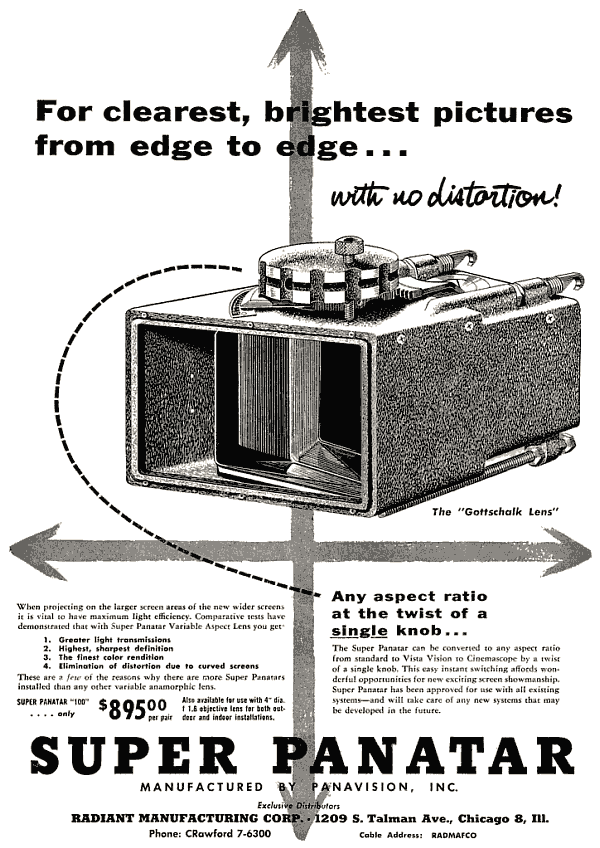
Panavision Incorporated's first entry into motion picture optics was the Super Panatar variable anamorphic lens. As was the case with their Ultra Panatar, the Superscope variable lens, the Hi-Lux VAL, and the Kalee Varamorph, the advent of the variable anamorphic lens was in anticipation of Paramount's imminent release of anamorphic VistaVision prints. Ultimately Paramount delivered only a few anamorphic prints of White Christmas and then dropped the concept. In the United Kingdom, however, The Rank Organisation created a slightly different VistaVision anamorphic print with a minor squeeze factor of 1.37x which was used with full frame 35mm prints to yield a very high quality 1.85:1 screen ratio. After a few feature films, Rank also abandoned the scheme, leaving the Kalee Varamorph's to be set at 2x and left that way for CinemaScope.
You may note the use of the word "anamorphotic" in early Panavision literature. This is not a misspelling. The folks at Fox felt that the word was a bit difficult for the average Joe, or perhaps Zanuck continuously mispronounced it, and so they altered "anamorphotic" to "anamorphic." After "anamorphic" had virtually become a household word, Panavision adopted its use as well. And that's the way living languages work. Aren't you glad you found this page?
Following this brief ad from our sponsor, we present the installation instructions for those of you that have been having difficulty installing and adjusting your Super Panatar for optimum performance.
 |